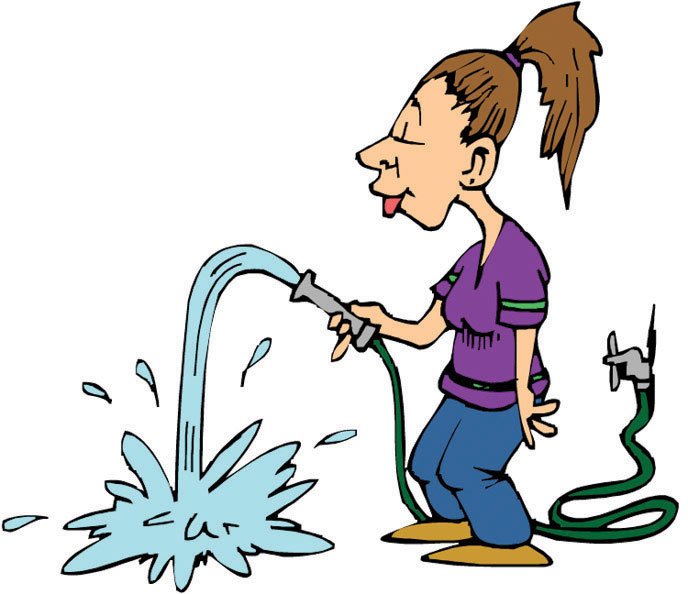With our rainfall total and snow pack this past winter far below
normal, we’re being asked to voluntarily cut back 10 percent on
water this summer. Whether we’re in a drought or not, it’s never
wise to waste our most precious resource.
With our rainfall total and snow pack this past winter far below normal, we’re being asked to voluntarily cut back 10 percent on water this summer. Whether we’re in a drought or not, it’s never wise to waste our most precious resource.
First of all, fix any leaks you might have in pipes, sprinkler systems, hose bibs, etc. If you have an automatic sprinkler system, check to make sure the water is going where it’s supposed to go. All you need is a screwdriver and a pair of pliers to adjust any sprinklers that are out of whack. Obviously you don’t want water running into the street or onto pavement; keep the water on the grass and plants where it’s supposed to be.
Even when you water is critical. Try to avoid watering in the heat of the day when evaporation is its highest. Late in the afternoon when our local winds tend to kick up is not good either. The best time to water is early morning, just before dawn. You should try to avoid watering at night or just before dark because fungus diseases have all night in cool temperatures to take hold.
If you water by hand, save additional water by forming little dirt basins around large trees or other plantings. This way you can fill the basin up with water instead of the water simply running away. This brings up the additional point of soaking rather than sprinkling. Soaking encourages deeper, healthier roots. If you simply sprinkle things, roots will grow shallower and be weaker. For lawns, 15 or 20 minutes per station is usually the minimum, while shrubs and plants could get away with less.
This time of year, two or three times per week is usually sufficient for most plants and lawns. The exceptions are container plants and some extra-thirsty specimens like fuchsias, impatiens and ferns. Some of these may need to be watered daily. Of course, it depends on our weather. If we’re going through a few especially cool days, adjust your watering schedule.
As for mulching, you should heed the name of this column. Any bare dirt in your garden can be covered with a 2-inch layer of mulch to prevent evaporation and some weeds from germinating. This mulch can take the form of soil conditioner, organic compost, shredded “gorilla” hair and more.
Finally, your lawn takes the most water in the garden. Set your lawn mower to either the second-highest notch or highest notch, which will result in a higher blade of grass. Longer grass allows less evaporation, stringer roots systems and the need for less water. You don’t want to be mowing your lawn at the same blade height in the summer as the rest of the year.













